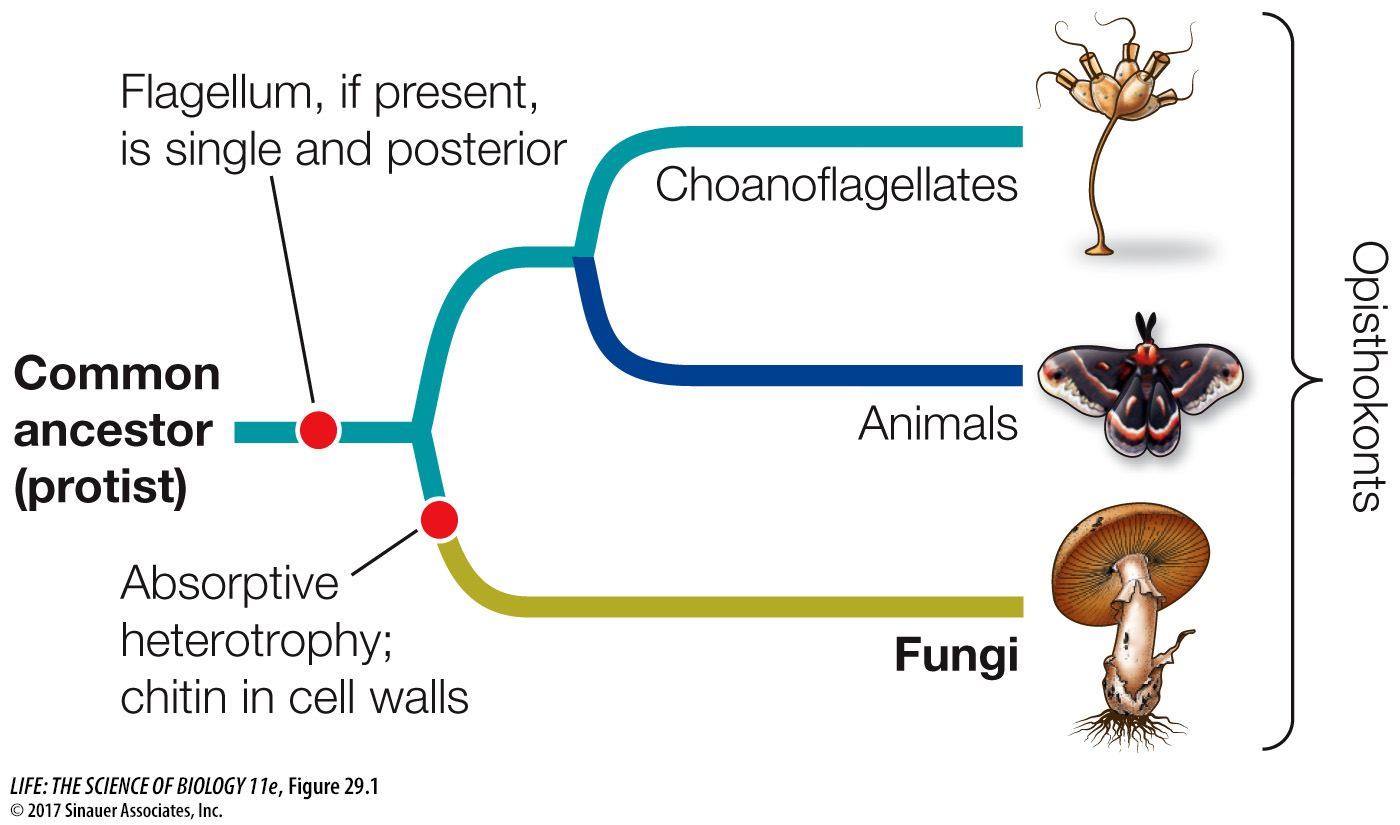key concept 29.1 Fungi Digest Food Outside Their Bodies
614
Fungi are distinctive in the way they digest their food. They secrete digestive enzymes to break down large food molecules in the environment, then absorb the breakdown products through their cell membranes in a process known as absorptive heterotrophy. This mode of nutrition allows them to be successful in a wide variety of environments. Many fungi are saprobes, meaning they absorb nutrients from dead organic matter. Others are parasites or predators, feeding on or consuming other living organisms. Still others are mutualists, living in intimate associations with other organisms that benefit both partners.
focus your learning
A mycelium, the body of a multicellular fungus, is made up of hyphae.
Mycelia have enormous surface area-
to- volume ratios.
Modern fungi evolved from a unicellular protist ancestor that had a flagellum, although most fungi are not motile and have now lost this structure. The probable common ancestor of the animals was also a flagellated protist much like the living choanoflagellates (see Figure 30.2). Current evidence, including the sequences of many genes, suggests that the fungi, choanoflagellates, and animals share a common ancestor not shared by other eukaryotes. These three lineages form a group known as the opisthokonts (Figure 29.1). A synapomorphy (shared derived trait) of the opisthokonts is a flagellum that, if present, is posterior, as in animal sperm. The flagella of all other eukaryotes attach at the front or sides of the cell, rather than at the rear.

Synapomorphies that distinguish the fungi as a group among the opisthokonts include absorptive heterotrophy and the presence of chitin, a nitrogen-